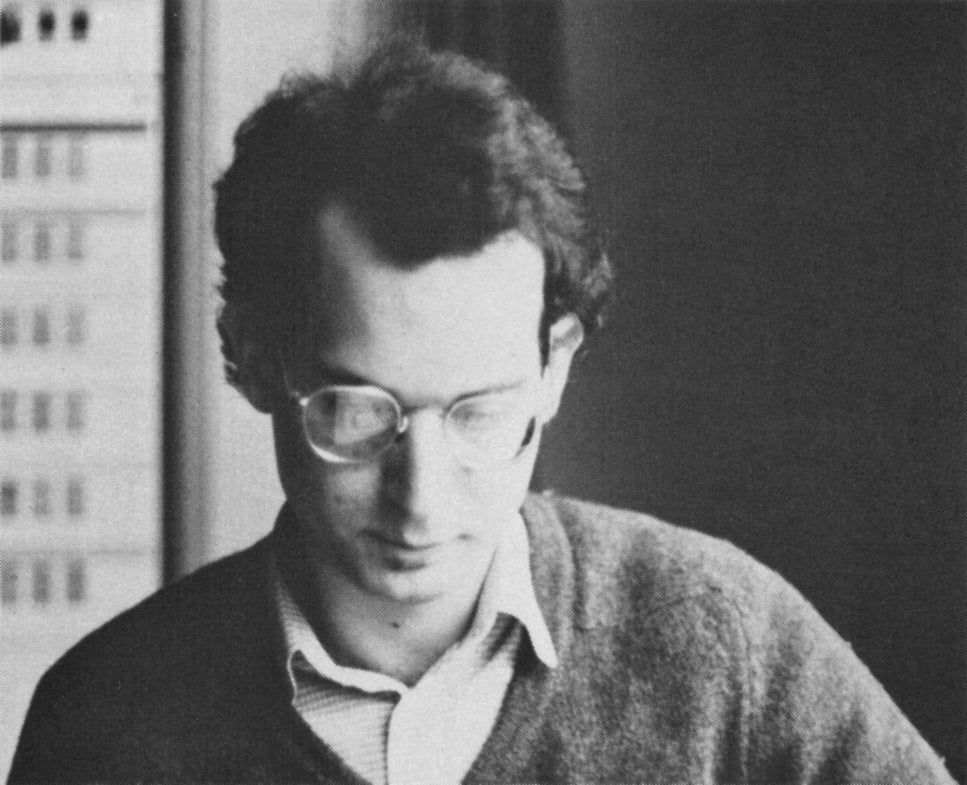2008 Reissue Liner Notes by Phill Niblock
Carl Stone’s “Woo Lae Oak” is a nicely minimal work I like very much. One doesn't need any information about sources or methods to go along comfortably with Carl's treatment. I note only two basic sounds in the piece: an ongoing “string tremolo” and a flute-like voice that intermittently tries to become a “tune” but just as purposefully stretches into beating long tones. There isn’t anything else, and there doesn’t need to be. The piece engages and carries one along without the need for further sonic resources. This is Carl's way. He strips his materials down to fundamental characteristics in order to probe the realities he finds. Even simple materials can yield nearly an hour of inquiry. To me, that’s the essence of minimalism. Early on in Carl’s career, many of us were enthused by the “how'd he do that?” factor of some of his pieces. But before long, Carl's abilities, which seem to bear little attachment to formal Western musical tradition, began to show an inner logic that has always been compelling and individual to the sonic materials themselves. Generating four or five pieces a year, I think, Carl has developed a body of work that is simultaneously broad and readily identifiable as his. Through his travels and his musical exposure, Carl has sampled sounds and music from many parts of the world. Some of his pieces feel exotic and some resonate with the familiarity of popular music. No matter what his source, he stays true to his personal methods of inquiry. I admire Carl’s ability to uncover the inner stuff of sonic materials derived from so many disparate places in our world culture.
- Phill Niblock
Original Wizard LP notes by Alan Rich
“Woo Lae Oak” – its name, as with many of Stone's pieces, taken from a favored Oriental restaurant in or around Los Angeles – was commissioned by the California Institute of the Arts, in 1981, as a piece either for radio or live performance. The radio version, contained on the record, is, of course, fixed in time: about 56 minutes; the live version allows the performer considerable leeway to mix and manipulate the basic materials and, thus, to create each performance as a new piece. Those “basic materials” for “Woo Lae Oak” are the simplest: a string to be rubbed (for the tremolo effect), air in a small chamber (a bottle, in other words, with the player merely blowing over the top). The music is created by means of classic tape techniques: layering, tape loops, changes of speed, no filtering. Music such as this, both its sound and its medium, demands from all of us vast and interesting changes of definition. A 56-minute expanse, consisting mostly of sustained tones with bits of musical substance moving across the horizon, becomes fixed in the hearer's consciousness. Eventually, this flow of low-level event becomes a sort of musical ground zero; we are drawn to it, and we invent our own melodic imagination over the flat surface the composer provides. The sustained tones themselves, for that matter, become melody; there is no rule, after all, as the how many notes a melody is supposed to contain, or how often they must change. Hearing the work on a record, or on the radio, also obliges us to rethink relationships between hearer and music. Some of us sit still while it goes on; others walk around, come in and out of the room. Stone himself doesn't object to this. “The music,” he says, “is like looking at a clock. The movement is minimally perceptible as you listen continually. It's only when you drop out and drop in again - as when you look away from the clock and then look back – that you're aware that there has been movement. “But music is actually more fascinating,” Stone goes on, “when it's in your head. My own pacing of my music isn't determined by outside influences, as it would for a march or a waltz. It's a part of my own psychological time, in lockstep with my own internal clock. I hope others hear it that way, too."
- Alan Rich, Music Critic, Newsweek

![[product title] - unseen worlds](http://unseenworlds.com/cdn/shop/products/UW15CoverHiRes_533x.jpg?v=1566370080)
![[product title] - unseen worlds](http://unseenworlds.com/cdn/shop/products/UW20_-_Cover_Hi_Res_533x.jpg?v=1566370079)
![[product title] - unseen worlds](http://unseenworlds.com/cdn/shop/products/UW26_-_Carl_Stone_-_Baroo_533x.jpg?v=1558493313)
![[product title] - unseen worlds](http://unseenworlds.com/cdn/shop/products/himalaya_533x.jpg?v=1566021680)